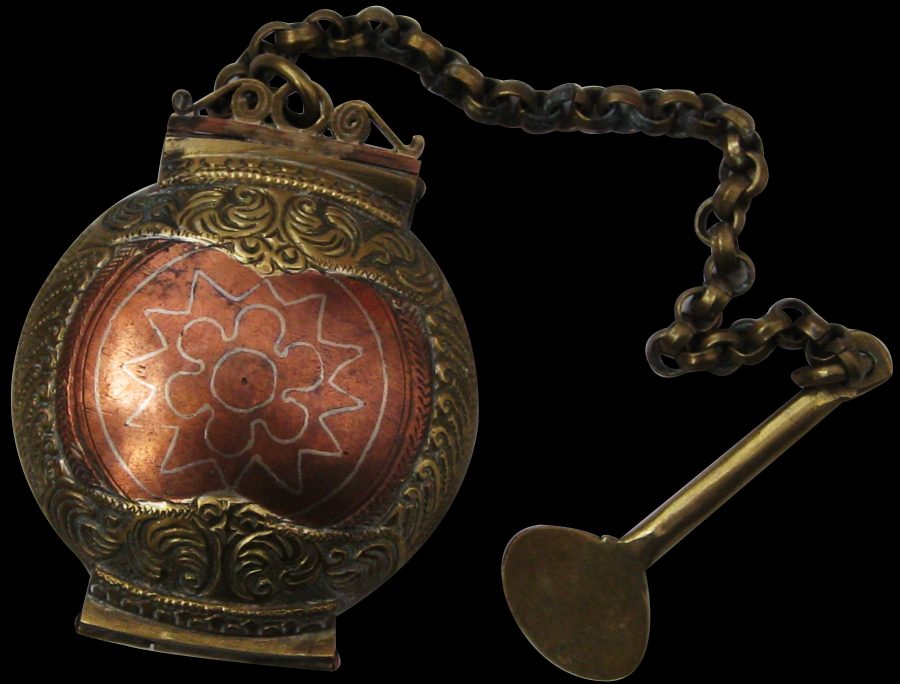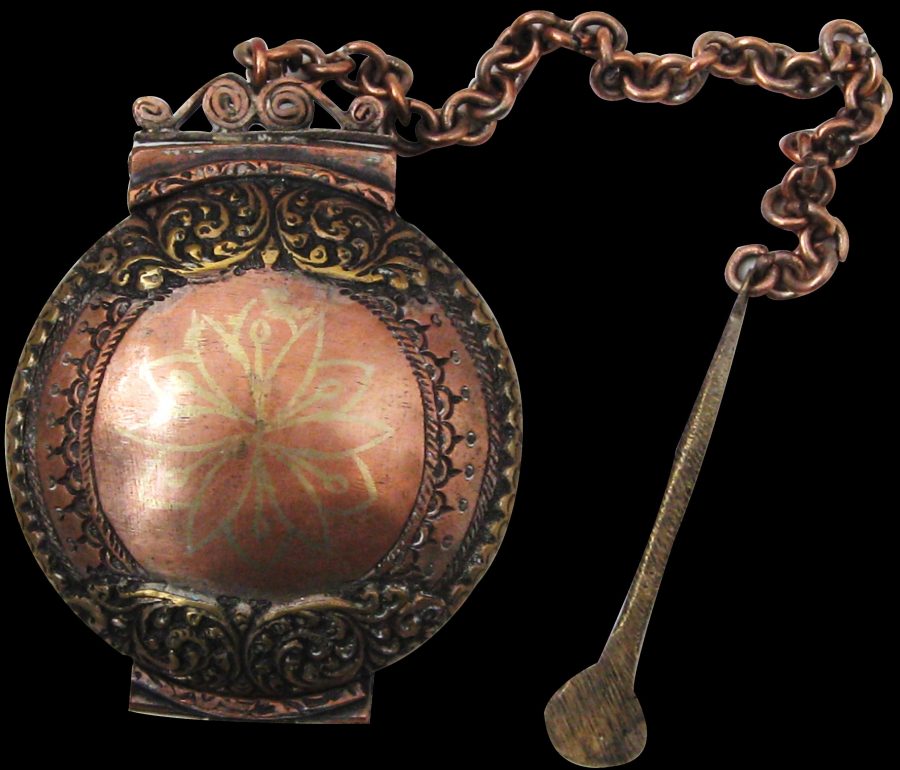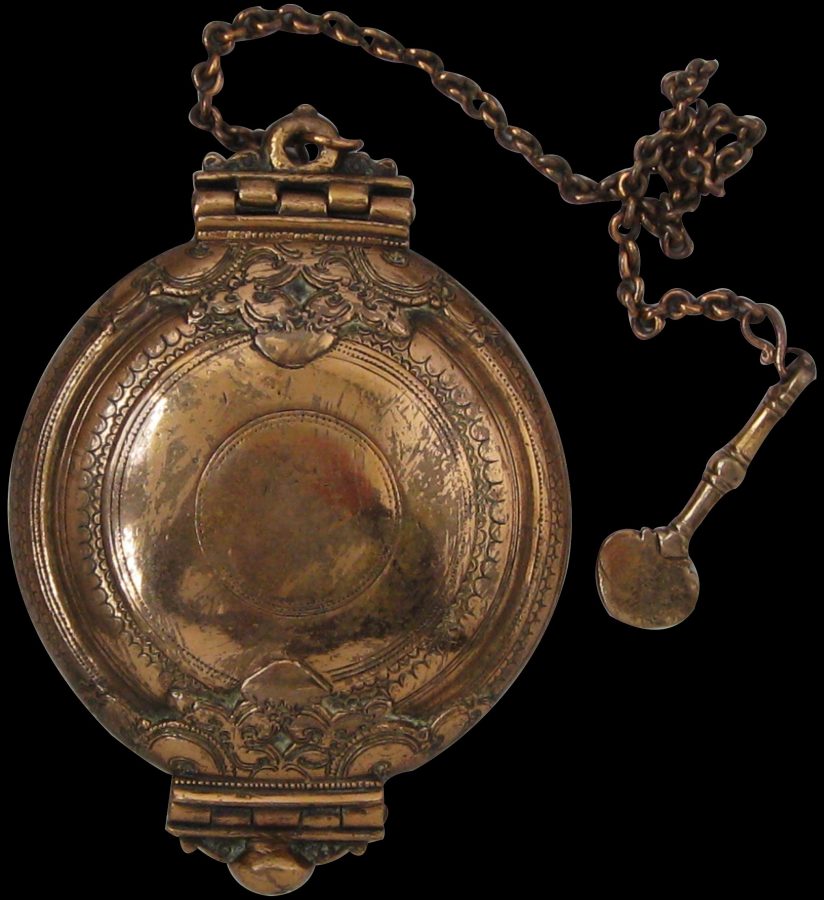Each lime container is variously composed of brass, copper, silver or a mixture and has been cast, engraved and inlaid. The larger, circular lime container has been gilded and several of the smaller containers have been partly gilded. All are hinged and most retain their original chains and spatulas.
The form of these containers might well be based on European gentleman’s pocket watch cases. Lime containers in Sri Lanka were relatively ubiquitous because it was believed that poison was best concealed in lime. Lime was taken with the areca nut (commonly referred to as betel) and it was usual to be offered betel by one’s host. But to ensure a ‘safe’ betel quid, it was expected that one would bring one’s own lime, hence the need for portable lime containers such as these examples.
Similar Sri Lankan lime containers are shown in Klebert (1983).
References
Klebert, B., ‘Chewing betel through the ages’, Arts of Asia, January-February, 1983.








